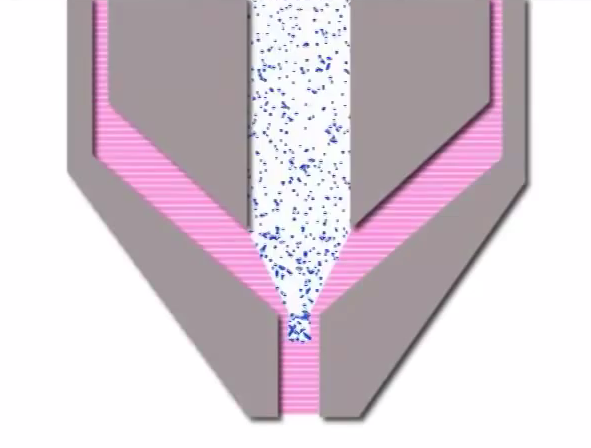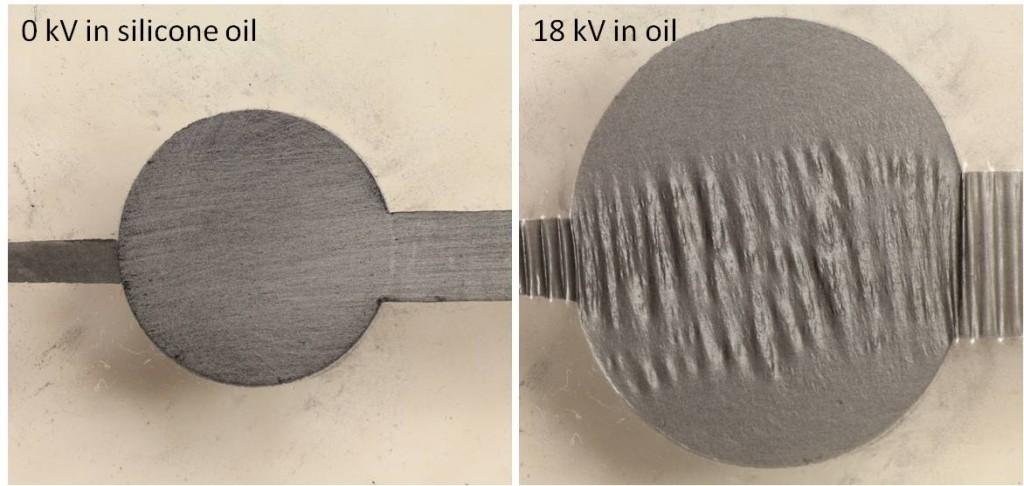 Imagine a time when we have robotics which are able to move like human beings, with actual movements which are dictated by muscles similar to our own. Imagine a time when prosthetic devices function no differently than the actual body parts that they are replacing. A prosthetic leg could have the same basic man-made structure of muscle fibers within it as seen in an actual human leg. These artificial muscles would be light-weight, energy efficient, and best of all work amazingly well. This future may be here sooner than we all could have imagined.
Imagine a time when we have robotics which are able to move like human beings, with actual movements which are dictated by muscles similar to our own. Imagine a time when prosthetic devices function no differently than the actual body parts that they are replacing. A prosthetic leg could have the same basic man-made structure of muscle fibers within it as seen in an actual human leg. These artificial muscles would be light-weight, energy efficient, and best of all work amazingly well. This future may be here sooner than we all could have imagined.
This week, it was revealed that the Factory Automation and Production Systems (FAPS) Institute at Friedrich-Alexander-Universität Erlangen-Nürnberg (FAU), has purchased an Aerosol Jet Quad Print Engine, from the production grade 3D printer manufacturer, Optomec. Optomec, is known for their Aerosoljet technology within their printers, which allows for prints with extremely high resolution, as well as the ability to print with a variety of conductive materials, and materials which can be utilized for the fabrication of end-use products.
There is a reason why FAPS approached Optomec for this purchase. They are looking to develop an automated production environment by which they can manufacturer artificial muscles, known as dielectric elastomer actuators(DEAS). In doing so, FABS hopes to utilize these DEAS in many interesting applications, including that of prosthetic devices, robots, and games.
“As Aerosol Jet printing technology allows the manufacturing of homogeneous layers with a thickness below 10 microns, the process seems very well suited to print stacked DEA composed of Silicone layers as dielectric medium and Carbon Nano Tube (CNT) compounded silicone electrodes,” said Dr. Sebastian Reitelshöfer, Director of the Research Sector Biomechatronics at FAPS. “We believe this will be an important element in the successful production ramp up of DEA-based applications.”
The Aerosol Jet Print Engine will enable FAPS to print fine details with multiple materials. In fact, the modular system can be customized for the job, able to print with four different materials during a single project, as well as having the ability to print on multiple substrates simultaneously.
“We’re pleased to see the unique capabilities of Aerosol Jet technology being applied to the exciting area of DEAs and helping develop production grade manufacturing environments for their implementation,” said Ken Vartanian, VP of Marketing at Optomec. “The research being done at FAPS holds great potential for many life-changing innovations and we’re proud to be contributing to accelerate the commercial viability of this work.”
By enabling FAPS to print conductive elements at microscopic levels, along with biomaterials within the same system, the manufacturing of DEAs, and the subsequent applications of those DEAS may be realized sooner than we all may have thought.
Let’s here your thought on this research, Optomec printers, and what may come out of all this in the Optomec FAPS 3D printed DEA forum thread on 3DPB.com. More details on Optomec’s AerosolJet system can be found here. Check out the short video below, showing how the Aerosoljet technology works:
[Image Source: ntu.edu.sg]
Subscribe to Our Email Newsletter
Stay up-to-date on all the latest news from the 3D printing industry and receive information and offers from third party vendors.
You May Also Like
Gorilla Sports GE’s First 3D Printed Titanium Cast
How do you help a gorilla with a broken arm? Sounds like the start of a bad joke a zookeeper might tell, but it’s an actual dilemma recently faced by...
Nylon 3D Printed Parts Made More Functional with Coatings & Colors
Parts 3D printed from polyamide (PA, Nylon) 12 using powder bed fusion (PBF) are a mainstay in the additive manufacturing (AM) industry. While post-finishing processes have improved the porosity of...
$25M to Back Sintavia’s Largest Expansion of Metal 3D Printing Capacity Since 2019
Sintavia, the digital manufacturing company specializing in mission-critical parts for strategic sectors, announced a $25 million investment to increase its production capacity, the largest expansion to its operations since 2019....
Velo3D Initiates Public Offering in a Bid to Strengthen Financial Foundations and Drive Future Growth
Velo3D (NYSE: VLD) has been among a number of publicly traded 3D printing firms that have attempted to weather the current macroeconomic climate. After posting a challenging financial report for 2023,...

































